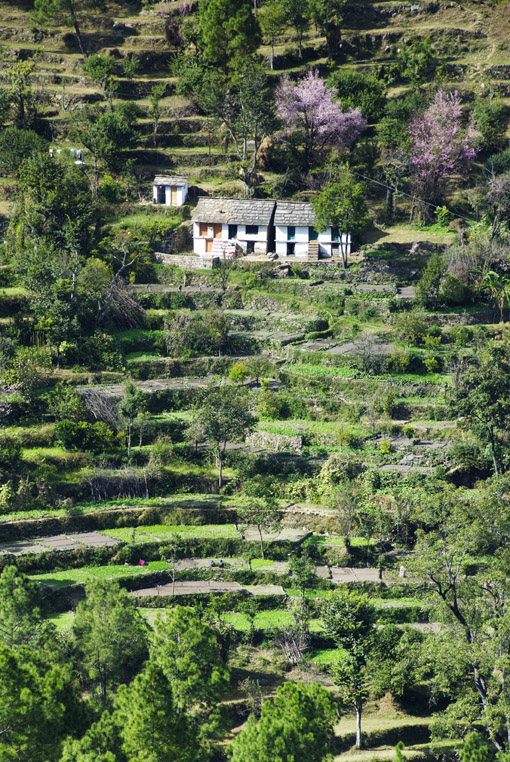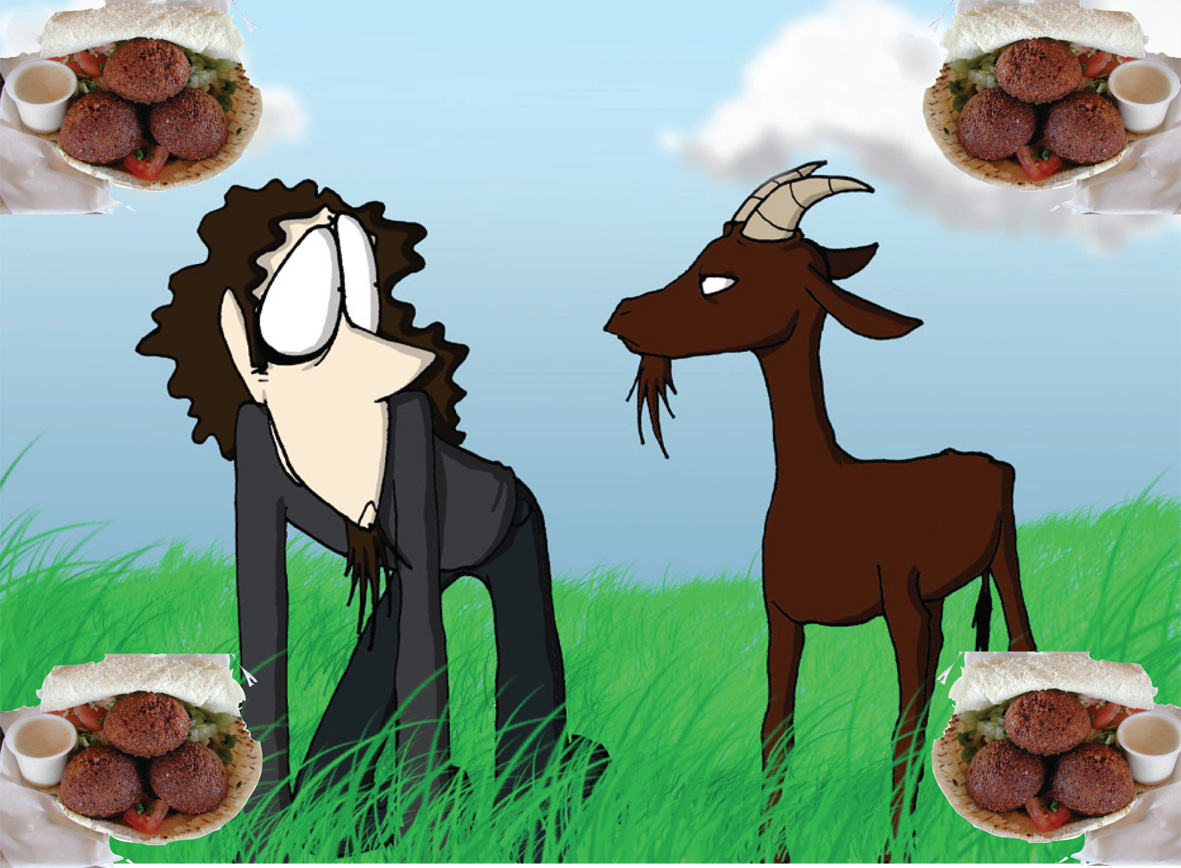
It’s hot, I’m thirsty and after walking for three hours, I’m famished. When I come across the meadow beside the stream I’ve been following, I don’t need a sign to tell me that this is my lunch spot.
I’m marching through late autumn scenery around Almora, the hill station in India’s Kumaon region, which squeezes itself into the hindquarters of Tibet. I started out mid-morning from the rim of the valley, 300 metres higher up. From Paparselly, on the outskirts of Almora, I took a trail that plunged down the ridgeline into the cleavage of the valley, leaving behind a view of the snow-capped Himalayas and hillsides echoing with barking dogs and small voices calling “Namaste, namaste!”
At the bottom the trail crossed a stream at a pretty yellow Shiva temple and took me across a bridge and up through fields where men ploughed fields for winter wheat behind grunting oxen.
On the hillside above, a group of workmen building a house had downed tools for lunch, which was enough to stir my taste buds to action. A kilometre further upstream, near the remains of a stone water mill, the trail dipped again to meet the stream at the meadow where I am sprawled.

I park myself on a warm, water-smoothed boulder that crests above the grassy surrounds, remove boots and socks, snapping open the catch on the tiffin carrier that the cook at my hotel has provided.
The tiffin carrier comprises five metal bowls on top of another, held in place by a U-shaped metal band that also serves as the handle. They are the standard lunch box for deskbound workers across the nation. Without the tiffin carrier, India would grind to a halt. Although the standard tiffin fare is vegetable curries and dahl, mine has a Mediterranean accent today. One bowl contains felafel balls, another chappatis, then salad, yoghurt with cucumber and finally hummus. I lay them out, glistening in the sunshine, slit open a chappati to make a pocket and load it with felafel and salad, moistened with a dribble of yoghurt.
Just as I’m crunching the first satisfying mouthful, a goat rounds the corner of the stone wall beside me with half-chewed grass in its mouth, lifts its head and sniffs the air lasciviously. This is clearly an “Aha” moment for the goat. It advances, nickering with pleasure at the feast that fate has brought its way.
When it begins licking its chops over the hummus, I push its head away, gentle but firm. The goat shoves my hand back with greater vigour. Enough is enough. I leap to my feet, insert my body between goat and lunch, and with the bowls clutched in my arms and chappati clamped between my teeth, leap across the boulders to the other side of the stream, slopping yoghurt down the front of my shirt. On the far side is an isolated rock with steep sides where I arrange my tiffin bowls, safe from the cloven-hoofed criminal.
When I cross back to the other side to retrieve the rest of my belongings, the goat regards me with a melancholy expression. From its mouth dangles half a sock. It’s going to be a painful climb out of the valley!





